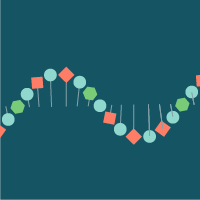Spotlight on RNA–LNP vaccine innovation
Vaccine Insights 2025; 4(2), 75–76
DOI: 10.18609/vac.2025.011
The global health emergency of the 2019 SARS-CoV2 pandemic spurred significant research and innovation in RNA-based vaccines and therapeutics. With billions receiving mRNA vaccines, there is a vast amount of late-stage clinical and real-world data supporting their safety and efficacy, while also underscoring limitations of first-generation mRNA vaccines.
This month’s collection of articles and interviews covers a breadth of innovations in RNA and formulation technologies, ranging from the use of machine learning to discover next-generation precision lipid nanoparticles (LNPs) to use of kinetic models to predict vaccine shelf-life.
HDT Bio’s Dr Taishi Kimura presents a viewpoint that underscores the pressing need to enhance RNA vaccine safety. Kimura’s focus on localized delivery via a proprietary nanoemulsion that avoids systemic biodistribution and inflammation opens a promising path toward minimizing adverse events such as myocarditis. His insights draw from both clinical data and mechanistic studies, emphasizing the importance of spatially controlled innate immune activation.
Sanofi’s mRNA process and its CMC team (Scaccia, et al) introduce data-driven advanced kinetic models (AKMs) capable of predicting vaccine shelf-life and stability under a wide range of storage conditions. These initial models are promising, enabling not only shelf-life prediction but also the establishment of internal release limit (IRL)—a key attribute providing assurance that a specific batch will remain stable during its shelf life.
Dr Bowen Li’s interview shifts the lens toward the future of LNP development, where artificial intelligence (AI) serves as a catalyst for discovery. At the University of Toronto, Li’s AGILE and LUMI-lab platforms exemplify a self-driving, data-rich approach to LNP design, identifying novel, structurally unique lipids optimized for organ-specific delivery.
Complementing this technological frontier is Duccio Medini’s strategic vision for the RNA Readiness + Response (R3) program. Medini articulates a global framework that democratizes RNA manufacturing by decoupling product design from manufacturing technologies. Advancements in production capabilities in a product agnostic way promises to enable rapid response to ‘disease X’ or the next pandemic. The current ‘R3 Global’ program aims to deploy promising advancements from the first cycle to multiple RNA biofoundries that can be accessed by scientists globally through an RNA service broker.
Finally, the team at Replicate Bioscience (Spasova, et al) explore variants of alphavirus based self-replicating RNAs (srRNA) and their ability to affect humoral and cellular immunity. Their data, compared to previously published data, suggest that the optimal srRNA backbone may be antigen-dependent.
Together, these contributions capture a field undergoing rapid change. These articles point to a future where precision, safety, and global equity define the next generation of mRNA vaccines.
Biography
Amit Khandhar earned his PhD in Materials Science and Engineering from the University of Washington, Seattle, WA, USA and, for over a decade now, he has investigated how various nanoparticle technologies interface with biological systems. He is an inventor of HDT Bio’s LION™ technology—a clinical-stage formulation used for the delivery of self-amplifying RNA vaccines. His current research interests lie in understanding how routes of vaccine administration affect the quality of immune responses, extending HDT Bio’s AMPLIFY technology to diverse infectious disease and oncology targets, and designing formulations that enable nucleic acid modalities beyond saRNA.
Affiliation
Amit Khandhar PhD, Director of Formulations, HDT Bio, Seattle, WA, USA
Authorship & Conflict of Interest
Contributions: The named author takes responsibility for the integrity of the work as a whole, and has given their approval for this version to be published.
Acknowledgements: None.
Disclosure and potential conflicts of interest: Khandhar A is an employee of HDT Bio, and owns HDT Bio stock options.
Funding declaration: The author received no financial support for the research, authorship and/or publication of this article.
Article & Copyright Information
Copyright: Published by Vaccine Insights under Creative Commons License Deed CC BY NC ND 4.0 which allows anyone to copy, distribute, and transmit the article provided it is properly attributed in the manner specified below. No commercial use without permission.
Attribution: Copyright © 2025 Khandhar A. Published by Vaccine Insights under Creative Commons License Deed CC BY NC ND 4.0.
Article source: Invited.
Revised manuscript received: Apr 16, 2025.
Publication date: Apr 17, 2025.

